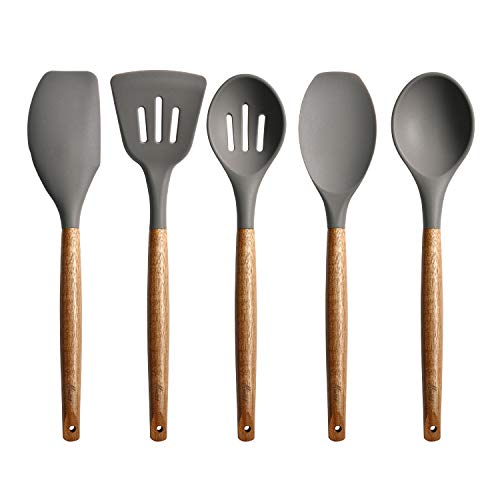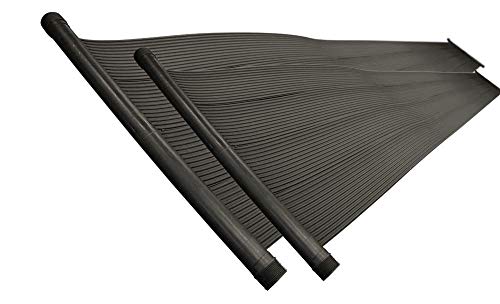
Are you looking to switch to BPA-free utensils for cooking? Our step-by-step guide will help you choose the right kitchenware. This guide explains the importance of BPA-free utensils, provides tips on identifying them, and offers recommendations for safer alternatives. By following this guide, you’ll be able to make informed choices and create a healthier cooking environment for you and your family.
Top Picks for Safe Kitchenware
Discover 4 Harmful Cookware Types to Steer Clear of and 4 Trusty Alternatives for You
Research BPA and its potential risks
To learn about BPA (Bisphenol A) and understand its potential health risks when exposed to high temperatures, follow these easy-to-follow instructions:
- Gather reliable sources: Begin by searching for reputable articles, scientific studies, or government websites that provide information on BPA and its health effects. Look for sources that specifically address the risks associated with exposure to high temperatures.
- Read about BPA: Dive into the articles and studies you found. Pay attention to the sections that discuss how BPA can leach from containers or products when exposed to high temperatures. Take note of the potential health risks associated with this exposure, such as hormone disruption or developmental issues.
- Understand safe usage: Learn about the guidelines or recommendations for using BPA-containing products when it comes to high temperatures. Some products may have specific instructions for safe usage, while others may suggest avoiding exposure to heat altogether.
- Consider alternatives: While researching, you may come across information about BPA-free alternatives. Explore these options and learn about their potential benefits and drawbacks. This knowledge will help you make informed choices when it comes to using products that may contain BPA.
Remember, always consult with a healthcare professional or specialist if you have specific concerns about BPA exposure and its potential risks to your health. Stay informed and make choices that align with your well-being.
Choose BPA-free materials
When it comes to choosing kitchen utensils, it’s important to prioritize your health and safety. To ensure this, look for utensils made from BPA-free materials. These materials include stainless steel, glass, silicone, or bamboo. By opting for utensils made from these materials, you can minimize your exposure to harmful chemicals.
To start, look for stainless steel utensils, such as spatulas or whisks. Stainless steel is a durable and non-reactive material, making it a safe choice for cooking and food preparation. Glass utensils, like measuring cups or mixing bowls, are also a great option as they are non-toxic and do not leach harmful chemicals into your food.
Another alternative is silicone utensils, which are heat-resistant, non-stick, and BPA-free. Silicone spatulas or baking mats are perfect for stirring, flipping, or baking. Lastly, consider bamboo utensils for a more eco-friendly option. Bamboo is a sustainable material that is naturally resistant to bacteria and does not contain any harmful chemicals.
By actively seeking out kitchen utensils made from BPA-free materials like stainless steel, glass, silicone, or bamboo, you can make a positive impact on your health and the environment. So next time you’re shopping for kitchen utensils, remember to choose wisely and prioritize your well-being.
Read product labels and certifications
When reading product labels and certifications, remember to check for labels or certifications indicating that the utensils are BPA-free. Look for phrases like ‘BPA-free’ or ‘Certified BPA-free’ on the packaging or product description. These labels or certifications assure you that the utensils are made without the use of bisphenol A (BPA), a harmful chemical often found in plastic products. By choosing BPA-free utensils, you can ensure the safety of your food and drinks. So, before making a purchase, take a moment to scan the product labels or descriptions for these important indicators.
Avoid plastic utensils
- Choose alternative materials: Instead of using plastic utensils for cooking, opt for utensils made from safer materials such as stainless steel, silicone, or wooden utensils. These materials are less likely to contain harmful chemicals like Bisphenol A (BPA).
- Check labels: If you’re unsure about the material of your utensils, check the labels or packaging. Look for utensils labeled as BPA-free or made from safe materials. This way, you can ensure that your cooking utensils don’t pose a risk to your health.
- Avoid microwaving plastic: When it comes to reheating food, avoid using plastic utensils in the microwave. Heat can cause chemicals from the plastic to leach into your food. Instead, transfer your food to a microwave-safe glass or ceramic container and use utensils made from safer materials to handle and stir your food.
- Consider reusable options: Reduce your plastic waste by investing in reusable utensils for cooking. Stainless steel or wooden utensils can be washed and reused, eliminating the need for single-use plastic utensils.
By following these simple steps, you can minimize your exposure to BPA and make healthier choices in the kitchen.
Consider heat resistance
Choose heat-resistant utensils that are specifically designed for high-temperature cooking. Look for materials such as stainless steel, cast iron, or oven-safe glass. Before purchasing, check the label or product description to ensure that the utensils can withstand the temperature range you intend to use.
When using these utensils, always follow the manufacturer’s instructions. Avoid exposing them to sudden temperature changes, as this can cause damage. Additionally, refrain from using plastic or wooden utensils for high-temperature cooking, as they may melt or warp. By investing in heat-resistant utensils, you can cook with confidence and ensure that your cooking tools will withstand the heat.
Evaluate durability and quality
To assess the durability and quality of utensils and ensure they can withstand regular use, follow these simple steps:
- Inspect the materials: Check what the utensils are made of. Look for high-quality materials such as stainless steel, silicone, or durable plastics. Avoid utensils made from flimsy materials that may easily break or warp.
- Examine the construction: Assess how the utensils are put together. Look for solid construction with secure joints and connections. Avoid utensils that have loose or weak parts, as they may break easily during use.
- Check for sturdiness: Hold the utensils in your hand and gauge their weight and balance. They should feel sturdy and well-balanced, neither too heavy nor too light. Utensils that are too heavy may be cumbersome to use, while those that are too light may lack durability.
- Consider the finish: Look at the finish of the utensils. A smooth and polished surface is preferable, as it is easier to clean and less likely to harbor bacteria. Avoid utensils with rough or uneven finishes that may be harder to clean or may wear down over time.
- Read customer reviews: Take the time to read reviews from other users who have already purchased and used the utensils. Their experiences can provide valuable insights into the durability and quality of the products.
By following these steps, you can evaluate the durability and quality of utensils to ensure they will withstand regular use. This will help you choose reliable utensils that will last and provide a great cooking experience.
Make an informed purchase
To make an informed purchase when it comes to BPA-free cooking utensils, it’s important to compare prices, read reviews, and make a well-informed decision. Here’s a simple guide to help you through the process:
- Compare Prices: Start by checking out different retailers and online platforms to compare prices for BPA-free cooking utensils. Look for discounts, deals, or bundle offers that could help you save some money.
- Read Reviews: Take advantage of online reviews from other customers who have already purchased and used BPA-free cooking utensils. Look for reputable websites or platforms that provide detailed and unbiased reviews. Pay attention to both positive and negative feedback to get a balanced perspective.
- Do Your Research: Take the time to research different brands and manufacturers of BPA-free cooking utensils. Look for information on their materials, manufacturing process, and any certifications they may have. It’s always a good idea to opt for brands that prioritize safety and quality.
- Consider Your Needs: Think about your specific cooking needs and preferences. Do you require a particular type of utensil, such as a spatula or tongs? Consider the size, durability, and functionality that will best suit your cooking style.
- Make a Well-Informed Decision: Armed with the information you’ve gathered, weigh the pros and cons of each option. Consider factors like price, quality, customer reviews, and your personal needs. Once you’ve assessed all these aspects, you’ll be ready to make a well-informed decision and confidently purchase your BPA-free cooking utensils.
Remember, taking the time to compare prices, read reviews, and do your research will help you make the best choice when it comes to BPA-free cooking utensils. Happy shopping!
Making safer choices for your kitchen
In conclusion, choosing BPA-free utensils for cooking is a crucial step towards a healthier and safer kitchen environment. Throughout this guide, we have highlighted the importance of avoiding harmful chemicals like BPA and provided you with essential tips for selecting the right utensils. By opting for BPA-free options, you can protect yourself and your family from potential health risks associated with these chemicals. So, next time you’re shopping for cooking utensils, remember to prioritize your well-being by choosing BPA-free options. Happy, safe, and healthy cooking!















